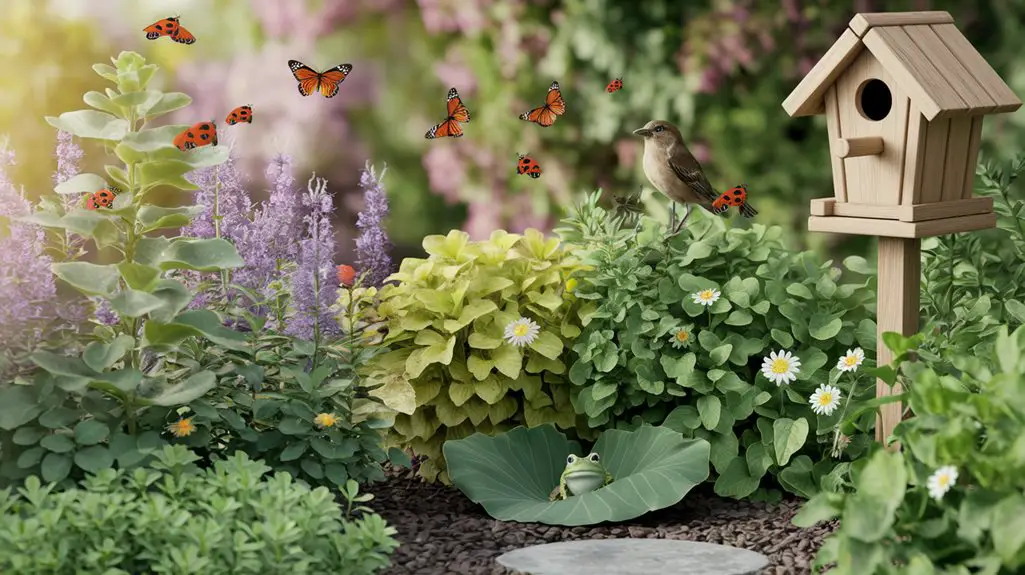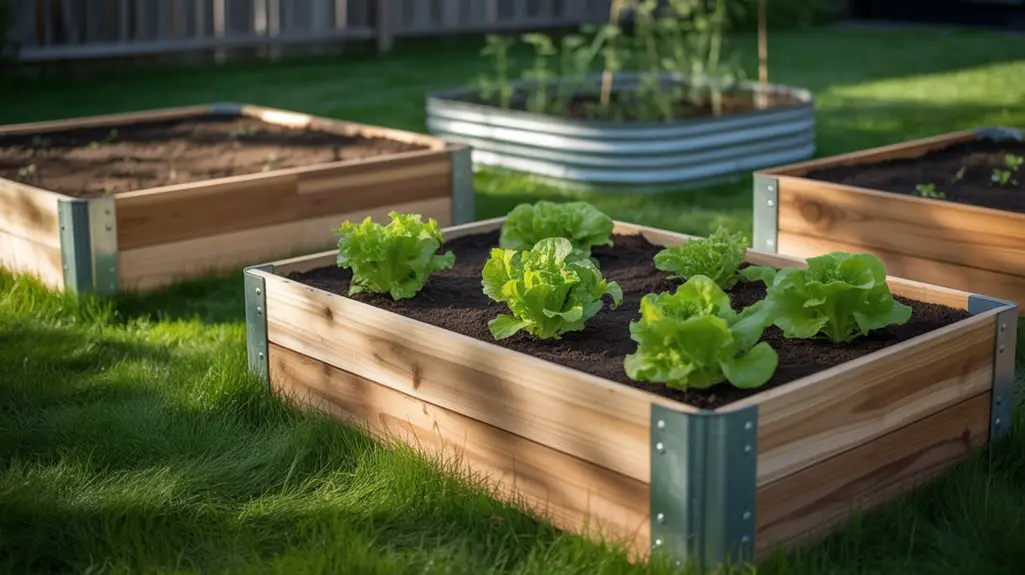Is conventional pest control truly as effective as advertised, or does it simply mask deeper ecosystem imbalances? You’ve likely noticed that chemical treatments often lead to rebounds of pest populations, sometimes even stronger than before. Sustainable yard management offers a different approach—working with nature rather than against it. By understanding the intricate relationships between plants, insects, and soil, you’ll discover solutions that protect both your garden and the broader environment.
Beneficial Insect Allies: Inviting Natural Predators
While many gardeners instinctively reach for chemical pesticides at the first sign of an infestation, cultivating a diverse population of beneficial insects can provide more sustainable pest management.
You’ll find ladybugs, lacewings, and parasitic wasps particularly effective against aphids, mealybugs, and caterpillars. Plant nectar-rich flowers like yarrow, dill, and cosmos to attract these helpful predators.
Maintain undisturbed areas with leaf litter and hollow stems where beneficial insects can overwinter. Additionally, effective natural pest control can significantly minimize chemical usage and promote a healthier garden environment.
Consider installing insect hotels—structures with various-sized holes and natural materials—to provide shelter for solitary bees and predatory insects.
Remember that even partial pest control from natural predators reduces the need for intervention while preserving biodiversity in your garden ecosystem.
Plant-Based Repellents for Common Garden Pests

Beyond recruiting beneficial insects, nature offers a pharmacy of plant-based solutions for deterring unwanted garden visitors. By strategically planting these botanical defenders, you’ll create a living barrier against common pests while enhancing biodiversity. Additionally, incorporating natural flowers into your garden can further enhance your pest control efforts.
| Plant Repellent | Target Pest | Application Method |
|---|---|---|
| Marigold | Root nematodes | Border planting |
| Garlic spray | Aphids, beetles | Foliar application |
| Chrysanthemum | Ticks, fleas | Companion planting |
| Neem oil | Scale, mites | Targeted spraying |
These compounds work through multiple mechanisms—disrupting feeding patterns, masking host plant scents, or directly irritating pests’ nervous systems. You’ll find most ingredients for these remedies already in your kitchen or garden, making them both cost-effective and accessible while avoiding the ecological disruption caused by synthetic pesticides.
DIY Organic Sprays and Solutions

Creating effective pest control solutions needn’t require commercial products with questionable ingredients when your kitchen and garden already contain powerful deterrents. Simply combine one tablespoon of neem oil with one teaspoon of mild liquid soap and one liter of water for a potent all-purpose spray that disrupts insect hormone systems without harming beneficial species. For fungal issues, mix one part milk with nine parts water to create a spray that combats powdery mildew through naturally occurring compounds that strengthen plant immunity. Against aphids, combine one tablespoon of crushed garlic with two cups of water and strain after 24 hours. Always apply these solutions during early morning or evening hours to prevent leaf burn, and test on small plant sections before widespread application. Additionally, using natural pest control methods not only protects your plants but also promotes a healthier ecosystem in your garden.
Strategic Landscaping to Deter Unwanted Visitors
When properly designed, your landscape can serve as your first line of defense against unwanted pests without resorting to chemical interventions.
Plant pest-repelling species like lavender, marigolds, and chrysanthemums strategically throughout your yard. These naturally deter insects while attracting beneficial predators like ladybugs and lacewings.
Create buffer zones between your garden and wooded areas using gravel or mulch to impede pest migration. Maintain at least 12-18 inches between your home’s foundation and any vegetation to minimize entry points for insects and rodents.
Diversify your plantings to prevent pest population explosions—monocultures invite disaster.
Install bird baths and pollinator houses to encourage natural pest predators. Finally, consider companion planting techniques, like surrounding susceptible crops with aromatic herbs, which mask the chemical signals pests use to locate their preferred hosts.
Additionally, employing organic pest control methods can enhance the effectiveness of your landscaping efforts by providing a holistic approach to pest management.
Physical Barriers and Traps That Preserve Ecosystem Balance
Physical barriers and traps represent a non-toxic approach to pest management that can effectively control unwanted visitors without disrupting the delicate balance of your garden’s ecosystem. These methods create selective exclusion zones that target specific pests while allowing beneficial organisms to thrive. Additionally, using natural methods can further enhance your garden’s resilience against pests.
| Barrier Type | Target Pest | Installation Method | Ecological Benefit |
|---|---|---|---|
| Copper tape | Slugs/snails | Wrap around planters | Prevents slime trail formation without chemicals |
| Row covers | Flying insects | Secure over crops | Allows sunlight/rain while blocking pests |
| Diatomaceous earth | Crawling insects | Apply as perimeter barrier | Biodegradable, non-toxic to mammals |
| Sticky traps | Aphids/whiteflies | Hang near affected plants | Monitors pest populations without pesticides |
When implementing physical barriers, you’ll maximize effectiveness by installing them before pest populations peak, creating a preventative shield that maintains your garden’s biodiversity.
Companion Planting: Nature’s Pest Management System
Companion planting harnesses the natural synergies between plant species to create a robust defense system against common garden pests. By strategically positioning complementary plants together, you’ll establish microclimates that deter harmful insects while attracting beneficial predators.
Marigolds release thiopene, a compound that repels nematodes and whiteflies. Plant them near tomatoes and peppers for maximum protection. Nasturtiums act as trap crops, drawing aphids away from your vegetables. Basil planted alongside tomatoes deters thrips and hornworms while enhancing flavor.
For broader protection, incorporate aromatic herbs like rosemary and thyme, which confuse pests through their strong volatile oils. Additionally, using natural pest control strategies can further enhance the effectiveness of your companion planting efforts.
The diversity created through companion planting mimics natural ecosystems, reducing pest outbreaks without chemical interventions and preserving soil health for future growing seasons.
Conclusion
As you embrace these eco-friendly pest control methods, you’re not just protecting your garden—you’re becoming a guardian of a complex ecosystem. Each ladybug you welcome represents a sustainable cycle of life, each companion plant a natural defense system at work. Your yard transforms into a microcosm of our planet’s delicate balance, proving that conservation begins in our own small patches of earth.




